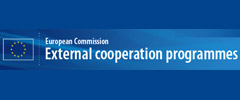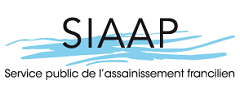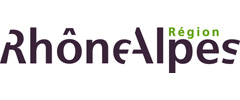Proposal EU toy directive leaves children exposed to toxics
WECF organised an expert meeting yesterday at the European Parliament, as parliamentarians are preparing to vote on a revision of a 20 year old Toys Safety Directive.
04.09.2008 |Chantal van den Bossche

Marie Jeanne Husset, director of the French state institute of consumer affairs (Institut National de la Consommation) said, yesterday, at an event organised by WECF – Women in Europe for a Common Future - at the European Parliament, “We were shocked when we found out in one of our product tests that toys that are meant to be sucked on by small children were full of nitrosamine, which is an extremely carcinogenic chemicals. One of the brands even carried the CE marking”.
WECF organised an expert meeting yesterday at the European Parliament, as parliamentarians are preparing to vote on a revision of a 20 year old Toys Safety Directive. The shadow rapporteur for the committee in charge of the directive proposal, mentioned, “We are glad that you organised this informative meeting, as so far we have received a lot of industry visits, but nobody representing the interest of children and their health”.
WECF published recommendations on how to improve the Toys Safety Directive, which can be downloaded: WECF Position Paper on the EU Toy Safety Directive
Minimum allowed levels would allow children to eat a gram of carcinogens
The proposed toys directive will still allow carcinogenic chemicals in toys, following a number of exceptions. Dr Brügemann of the German TÜV, said, “No carcenogic chemicals have a place in toys, to protect our children we should have a full ban of CMRs in toys”. He added: “Allowing a concentration of CMR’s of 0.1 % as is mentioned in the proposal is still one thousand times higher than the legal limit for the food packaging according to the Food Directive. Allowing 0,1% would mean that on toy of 1 kilogram, the child would be exposed to a gram of carcinogens, which is really an incredible high amount, in case of some carcinogens (category 3) even 1% would be allowed, which would mean 10 grams. These substances are so extremely dangerous that I would not even allow my second year university students to handle them in class. How can we let our children then just touch and play with them!“.
Severe reproductive health problems of baby boys linked to phthalates, which are widely used in toys
Dr. Henrik Leffers, head of the department of growth and reproduction of the University Hospital in Copenhagen showed results of health research which shows that baby boys which received phthalates, a hormone disrupting chemical, during pregnancy via the uterus, developed incurable problems with their testicals or penis, such as hypospedias. Dr. Leffers said, “Already today, 8% of children have to be born via artificial incrimination, because sperm counts are so strongly reducing. Especially in Finland, which until recently, had good sperm counts, we see in the last years the strongest reduction of sperm counts ever observed. Something must have happened 20 years ago, when their mothers were pregnant. One possible explanation is that there sons were exposed to phthalates. Phthalates are found in lots of products, we are surrounded by them, and they are extremely common in toys.
Toy scandals every year call for much stricter bans of toxic chemicals combined with control of toys
Sascha Gabizon, International Director of WECF said “we organized this meeting, because as parents we are very concerned with the toys scandals in recent years. Only last year more than 18 million toys had to be recalled, including toys bearing the CE mark, which parents often think means the toy is safe, but it’s not, as there is no control. In one case the Chinese manufacturer had mistakenly exchanged glue with a sedative, and lots of children were hospitalized. Certain toys like scubidu strings, were found to contain 40% of phthalates, as Dr. Leffers shows, these can be extremely dangerous for children, how come the proposed Toys Safety Directive would allow their use without any restriction?"

Sascha Gabizon ended with a plea for a stricter regulation: “Now we have the chance after 20 years to ban all hazardous chemicals from our children’s toys. Especially for toys, which are non essential products, which we do not need for survival, we have to insist that they do not make our children ill, any politician who denies that is wrong. Therefore, all CMR’s and all known hazardous chemicals such as phthalates and brominated flameretardands need to be excluded fully, without exception. Toys are meant to be fun, but not at the cost of our children's future".
-------------------------------------------------------------------
Last summer a string of scandals concerning recalls of large amounts of toys gained a lot of attention in the media, culminating in the worldwide recall of millions of toys after products had been found with too high levels of lead in their paint.
The European Commission DG Enterprise is currently working on a revision of the European Toys Directive. Based on recent scientific research, WECF and its members believe that the Toys Directive proposal does not effectively protect children from exposure to well-known dangerous chemicals.
To inform Members of the European Parliament on children's health risks from hazardous chemicals in toys, WECF organised an expert dialogue at the European Parliament in Brussels, Wednesday, September the 3rd.
Invitation for Members of the European Parliament to the Toys Expert Dialogue
Speakers:
- Welcome by Jens Holm, Member of the European Parliament, GUE/NGL Group
- M.Sc. Henrik Leffers, Head Department for Growth and Reproduction, Copenhagen University Hospital, Denmark
- Dr. Klaus Brüggemann, Verband der TÜV, Germany
- Eva Eiderstrom, Director of Shop and Act Green, Swedish Society for Nature Conservation, Sweden
For more information contact: Alexandra Caterbow or Nicole van Gemert at WECF, email: wecf @ wecf.eu
Related News
Human Biomonitoring for Europe
Vienna, 26 September: stakeholder forum
28.09.2018
WECF sends letter to Dutch Secretary of State concerning EU policy on EDCs
In a joint statement WECF and the EDC Free Coalition ask Dutch State Secretary Dijksma to insist on major changes at the Environmental Council meeting to protect our health and environment.
21.06.2016
Commission's EDC criteria proposal: More humans will have to be harmed before action is taken
The European Commission presented today its proposal for criteria to identify endocrine disrupting chemicals (EDCs). WECF and the EDCfree Coalition condemn strongly the decision.
15.06.2016
WECF film "How to protect children from EDCs" now available in Spanish
Pregnant women know it is important to avoid alcohol, nicotine and certain foods. However, what is less well known is that many everyday products contain pollutants that can also be harmful to your baby. WECF's film gives practical advice on how to avoid exposure to EDCs. It now also available in Spanish.
13.06.2016





































